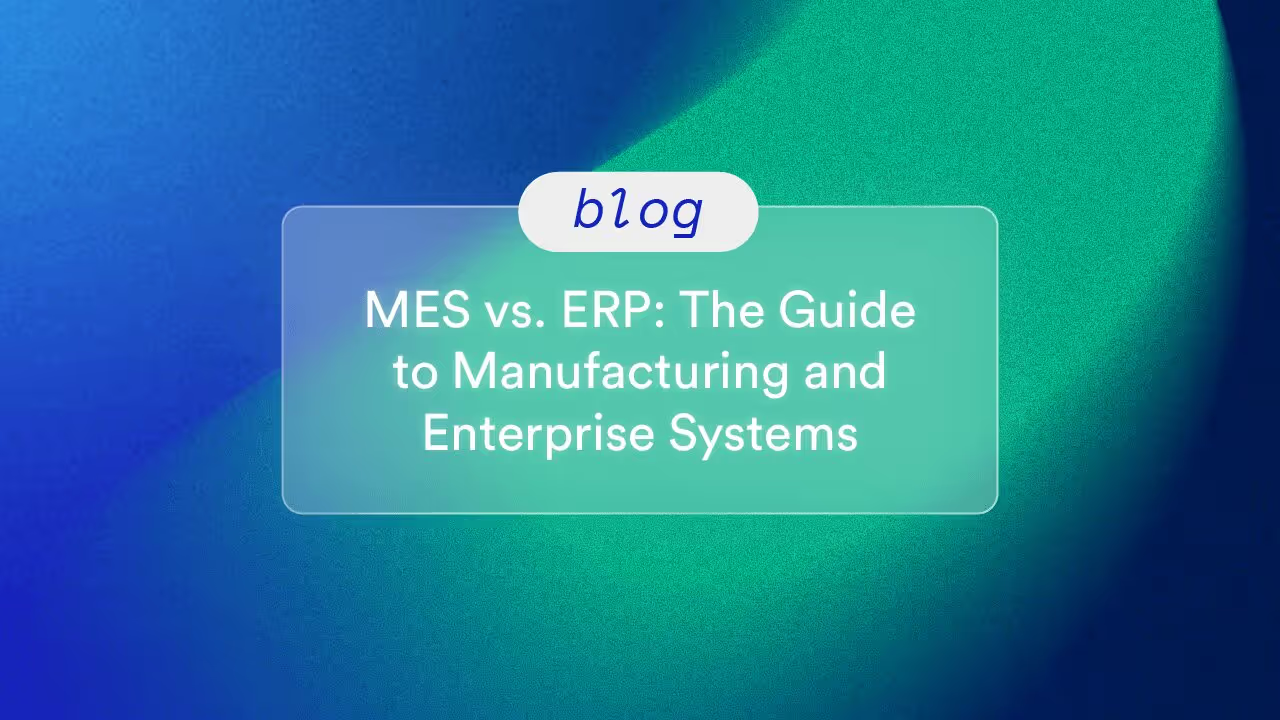MES: The Key to Strong Manufacturing Compliance Amid Changing Regulations

Regulatory compliance: Despite changes in demand, supply chain disruptions, and digitalization efforts—to name a few—the need for businesses to attain and maintain regulatory compliance remains steadfast.
That said, each passing year brings new tools, market pressures, and incidents that test the industry as a whole and reveal additional safety concerns for which regulatory bodies must account. As part of our mission of “making it as simple as possible,” we’ve written this blog. In it, you will find a list/description of the major governing bodies, a myriad of regulations that are currently in place across different industries/countries, and information about how technology—like our MES, TrakSYS™—helps bake compliance into the fabric of your operations.
Though standards and regulations can feel cumbersome or overly stringent, it is important to remember that governing bodies and industry leaders outline these rules to protect businesses, their customers, and brand partners. Among other benefits, the requirements we touch on in this piece:
- Promote transparency and trust by ensuring electronic records are accurate, reliable, and equivalent to paper records.
- Help standardize processes and systems used to create, modify, maintain, archive, retrieve, and transmit electronic records—which means more consistent, reliable products.
- Improve security to protect electronic records from unauthorized access, tampering, and losses.
- Establish accountability through audit trails that show the history of electronic records.
- Improve accuracy by validating records, access, and actions.
- Enable traceability so manufacturers can reconstruct events from the electronic record system to make better plans and respond to issues faster.

Relevant Manufacturing Compliance Regulations
Today’s regulatory environment is incredibly complex since the place of operations may differ from the final market in which products are sold. To ensure compliance throughout the supply chain, manufacturers must account for the regulations in their home country and those in any geography where their products may end up.
Key regulatory bodies with guidance that apply to manufacturers include:
The International Organization for Standardization (ISO)
The ISO’s standards are an internationally recognized and agreed-upon set of best practices designed to establish worldwide trust between businesses and consumers. They “define what great looks like” by standardizing benchmarks for various sectors.
- ISO 9001 is a part of the organization’s 9000 series and outlines the critical elements of quality management systems (QMS) within manufacturing (and other) organizations. It is the only 9000-series regulation for which organizations can prove compliance through a third-party certification process.
- ISO 13485 outlines additional requirements for QMS used in the design, manufacture, packaging, labeling, storage, installation, and servicing of finished medical devices intended for human use.
The World Health Organization (WHO)
The WHO’s current Good Manufacturing Practice regulations (cGMPs) are pharmaceutical-specific regulations defining the organization’s minimum guidance for quality assurance and controls, with provisions related to record keeping, personnel qualifications, sanitation, cleanliness, equipment verification, process validation, and complaint handling among others. The WHO provides various annexes that differentiate guidance for various product classes.
The WHO’s guidance forms the basis for various region-specific regulations that are further defined by local governments.
- United States: In the US, the Food and Drug Administration provides additional guidance related to products manufactured for human medical use or consumption in the Code of Federal Regulations. Of particular note are Title 21, Parts:
- 11, which defines the criteria for trustworthy, reliable, and paper-record-equivalent electronic records and signatures.
- 211, which outlines the country’s minimum current good manufacturing practice for the preparation of drug products.
- 820, which defines the country’s current minimum cGMPs for the design and manufacturing of medical devices.
- Canada: In Canada, food and drug manufacturing is governed primarily by the country’s Food and Drug Act, with its good manufacturing practices for drug products (GUI-0001) providing supplementary guidance.
- Australia: The Therapeutic Goods Administration within Australia’s Department of Health and Aged Care is responsible for the country’s cGMPs, which are guided by the principle that quality must be built into the process rather than tested into the batch. Unlike in some other countries, cGMPs in Australia are split into two sets of guidance—medicine and human blood and tissues—while medical device manufacturing is governed by a separate code.
- Southeast Asia: Since 2009, the ASEAN Consultive Committee for Standards and Quality (ACCSQ) has been responsible for the region’s cGMP guidance. The ASEAN Pharmaceutical Regulatory Policy (APRP, established in 2021) seeks to harmonize the region’s standards, taking inspiration from similar guidance around the world. The development of additional oversight entities and systems to support the APRP is still underway, so manufacturers in the region may still look to the WHO’s guidance as the standard.
- European Union: The European Medicines Agency’s (EMA’s) cGMPs apply to both human and veterinary medicines developed for sale in the EU. Manufacturers operating in the should also be aware of the EU-specific annexes that apply in the region, particularly Annex 11, which outlines requirements for using computerized systems in the region’s Life Sciences industry.

How Tech Helps Manufacturers Comply Today and Tomorrow
The connected tools that manufacturers have adopted to boost production performance can help them strengthen compliance programs—and prepare for any regulatory changes that may come in the future. Robust Manufacturing Execution Systems (MES) , like TrakSYS, use real-time monitoring and analytic capabilities to make compliance simpler and more manageable.
Approval Workflows
Approval workflows make stringent adherence to established practices the norm. By requiring review and approval of specific actions before processes can continue, compliance managers can feel confident that each production cycle aligns with internal and external standards.
Audit Trails
MES platforms maintain clear and complete documentation of all changes made to processes, documents, and practices. This includes who made the change, when it was made, and what was changed, ensuring transparency and accountability. This is a key component when validating software in regulated industries.
Automated Records and Reporting
TrakSYS generates detailed reports and documentation that are essential for regulatory audits and inspections. This includes production records, quality control data, electronic batch records (EBR), electronic device history records (EDHR), and other compliance reports.
Custom Dashboards
User-configurable dashboards provide real-time visibility into compliance metrics and the flexibility to visualize it in a way that makes sense for their business. This helps manufacturers stay on top of regulatory requirements and track performance against goals.
Data and Access Validation
MES platforms like TrakSYS validate data at the point of entry, ensuring that all records are complete, accurate, and compliant with regulatory requirements. These systems may also feature role-based access controls and secure encryption to protect unauthorized users from accessing or altering records, which can help manufacturers better comply with cGMPs across regions.
Digital Standardized Operating Procedures (SOPs)
MES platforms allow manufacturers to create, maintain, and enforce digital SOPs that ensure all operations are performed consistently and in accordance with validated procedures.
Electronic Signature Verification
MES platforms like TrakSYS enable the creation and management of electronic records and signatures, ensuring they are authentic, secure, and compliant with regulatory standards like those outlined by CFR Title 21, Part 11.
End-to-End Traceability
Automated record-keeping provides complete traceability of materials, processes, and products. This includes tracking supplier information, lot codes, process routes, employee interactions, and quality test results. Collecting and having access to all of this information—which can be viewed in real-time—is imperative under most applicable cGMPs.
Production and Process controls
To support compliance with 21 CFR Part 211, MES provides detailed records and reports throughout processing to encourage adherence to digital procedures for production. By monitoring process telemetry data in real-time, manufacturers can be alerted to possible future control issues and take action to prevent issues from occuring.
Product Lifecycle Management
MES support an integrated approach to lifecycle management, ensuring compliance with CFR Title 21 Part 820 and other similar regulations.
QMS Support
Connected manufacturing platforms support the implementation and maintenance of quality management systems (QMSs) as outlined by the ISO 9000 family and 13485.
Quality Checks
TrakSYS streamlines quality checks and ensures alignment with regulatory standards through things like Statistical Process Control (SPC) sample tracking and notification. This helps standardize data and processes across the supply chain to maintain consistent quality.
Risk Management
TrakSYS includes features such as audit, electronic batch records (EBR), SPC, digital forms, e-signatures, automated data collection, and visual digital workflows, ensuring that potential issues can be identified and mitigated as required under ISO 13485 regulatory bodies.
Security and Access Controls
MES provides secure function-level access control mechanisms to ensure that only authorized personnel can access and alter sensitive data, in adherence with EA 11.
Training Support Tools
Many MES platforms offer training modules to ensure that all employees are aware of any applicable regulations and understand the importance of ongoing adherence.
Visual Workflow Engines
Visual workflow engines, like the one in TrakSYS, help teams design, manage, execute, and continuously improve adherent processes.
TrakSYS: Built for Manufacturing Compliance and Consistency
TrakSYS is a unified MES that helps manufacturers meet the regulatory requirements and standards outlined above (21 CFR Parts 11 and 820, WHO’s GMP, cGMPs, ISO 13485 and 9001, and European Annex 11). In addition to offering all of the features noted, TrakSYS is backed by Parsec’s more than 30 years of experience helping manufacturers readily adapt to changing regulations.
With our unified platform and our team of expert resources, Parsec is here to help manufacturers meet their compliance goals today, tomorrow, and every day after. To learn more about how TrakSYS can maximize the efficacy of your regulatory compliance programs, dive into our brochure now.
FAQs
Related Blog Posts


Let’s Build Your Plan
We’ll help you create the right configuration—today and for the future.












